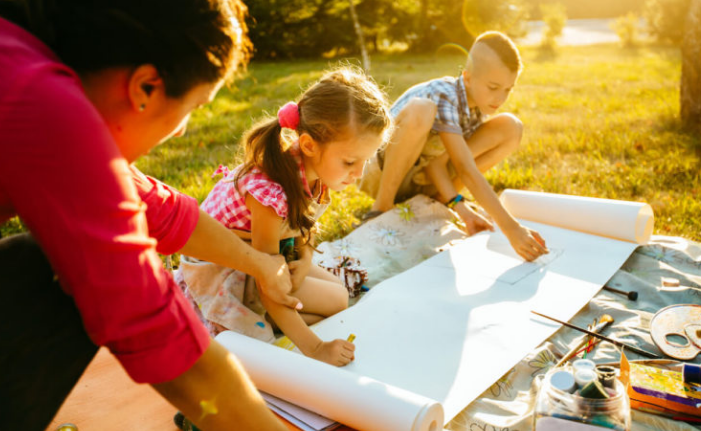What social-emotional learning can do this fall

The same “quarantine fatigue” affects them as it does us, as they carry feelings of loneliness and grief, as well as the effects of technology overuse and other stressors they’ve been dealing with at home since we last saw them.
This fall, Social Emotional Learning must take precedence. Students who have been traumatised (as we have all been this year) often display unusual behaviour and social difficulties.
When possible, we should incorporate instruction on emotional and mental health into our lesson plans and schedules in order to give students the skills they need to better regulate their own emotions and better relate to others. As teachers, we’re in a unique position to help guide them with strategies and help support families this school year.
When it comes to preparing for the new school year, it’s important to remember that students’ mental and emotional health is just as important as physical health.
AT School
READ Marvelous BOOKS: Books can open the door to a plethora of worthwhile discussions. A 5-minute read-aloud each day is a simple way to get students thinking about difficult subjects in a non-threatening way. When it comes to reading comprehension, even students in middle and high school benefit from a well-picked picture book.
In many cases, it is easier for students to understand a character’s problems than it is for them to understand their own, and this can lead to profound self-reflection and awareness. Try books like The Dot, A Bike Like Sergio’s, or Your Name is a Song to help you develop your creative side, your sense of empathy, or both (to open a discussion about cultural identity).
Don’t get rid of your classroom structure this year, whether you’re teaching online or in the classroom (or a combination of both!). Establish daily routines, such as a Morning Meeting, and consider whether or not to carry on with classroom projects or celebrations. Because of the current state of affairs, students benefit greatly from having some predictability in their schedules. My students look forward to our weekly mindfulness practise and our weekly Google Hangouts because they know there will be a quick game at the beginning of each session.
Use Professional-Level Tools:
If your school or district has a counsellor, use their resources to implement SEL strategies in your classroom. Check out WholeHearted School Counseling on TPT if you don’t have access to those resources! Mindfulness Brain Breaks and Kids Coping Strategies were a big hit with our elementary school students this year. Your students will gain confidence in their ability to self-manage and stay on top of their emotions by using this technique.
FAMILIES ARE WELCOME.
SHARE THE GOOD AND THE BAD. Children, adolescents, and adults have all had a difficult time in the last few months. Make time each day to tell others about the good and the bad. Listening to what your child has to say about their day will help them reflect on the good and the bad. Kids benefit from hearing adults talk openly about their thoughts and feelings, as well as the steps they’ve taken to move forward.
Together, pick and choose what you’ll see and read. Consider how the characters in a book might be feeling as you read it with a friend or family member. Spend some quality time together watching one of your favourite shows or movies, and then discuss how you would have acted differently if you were in their shoes. When confronted with difficult decisions in real life, reading and watching stories about other people’s experiences can be a helpful tool.
SET UP A QUIET SPACE Creating a “calm down corner” at home is a way to teach yourself or your child how to calm down in stressful situations. It could be a corner of the room, a chair, or even just a designated area. Some families like to include a favourite book or funny photos, colouring pages (even for the adults!), or peaceful artwork in their gift baskets. To help them calm down, encourage them to try sitting in the calm down corner when they’re feeling overwhelmed. Take a few moments to yourself, engage in some relaxation techniques, and then return to your family.
RESOURCES AVAILABLE ONLINE:
BETTER WORLD EDUCATION One person’s life around the world can be glimpsed through the lens of this Social Emotional Learning curriculum. Empathy and compassion can be fostered through the discussion of global SEL provided by these videos. Using lesson plans and stories, their Learning Journeys link each video to academic standards in math literacy social studies science and art. Teachers and families alike will appreciate it!
PLAY WORKS You should never undervalue the importance of having a good time! Conversation, relaxation, and learning to support one another can all be gained from playing a game with friends and family. CDC guidelines were even taken into consideration when Playworks created a YouTube channel full of games for classrooms or families to play together. Families, they have a Facebook page full of great ideas.
TEACHERS TO FOLLOW: There are some brilliant educators on Instagram who are sharing books, ideas, and resources to assist families and teachers at this time.



